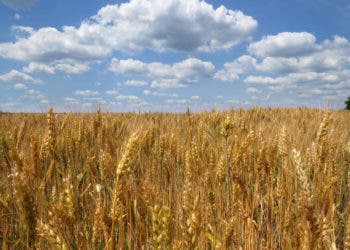A study following four American families for two weeks found that everyone’s bodies contain chemicals — but they can be flushed out.

To feed the almost 8 billion people around the world (and furthermore, ensure rich and diverse diets for the richer countries), we’re spraying our crops with an impressive amount of pesticides. In one way, this is extremely helpful, drastically reducing the negative impact of pests and diseases that have plagued our crops for millennia. But there’s a downside to pesticides as well: we may end up ingesting them, and they could be harmful to our health.
Roundup, the world’s most widely used weedkiller, contains a compound called glyphosate. There’s a lot of scientific debate regarding the actual perils of glyphosate, but the compound was flagged as a potential carcinogen as far back as 1983 by the US Environmental Protection Agency (EPA). Although there is contradictory evidence regarding the health dangers posed by this chemical, public debate has been shaped by the corporate lobby just as much as (if not more than) scientific evidence. As a result, the EPA has raised the accepted level of glyphosate substantially (in some cases by a factor of 300) above levels considered safe in 1990. Unsurprisingly, the presence of glyphosate in average Americans has also skyrocketed, from 12% in the mid-1970s to 70% by 2014.
The new study paints an even more concerning picture, as all members of the four families tracked contained glyphosate. The family members were tracked for six days on their regular diet, and for six days, they were asked to switch to a completely organic diet (various places have various definitions for what organic really means, but in this case, it was pesticide-free food). In just six days, the level of glyphosate in their bodies dropped by 70%.
We’ve written before about organic diets and how the alleged benefits of such diets are often exaggerated and blown out of proportion, but this study seems to show a tangible benefit. There is still a debate on whether or not the pesticides are causing any actual damage, but the authors of the study believe the pesticide levels can be hazardous, especially in children.
“While food residues often fall within levels that regulators consider safe, even government scientists have made it clear that US regulations have not kept pace with the latest science,” one of the study authors writes in an article for The Guardian. “For one, they ignore the compounding effects of our daily exposures to a toxic soup of pesticides and other industrial chemicals. Nor do they reflect that we can have higher risks at different times in our lives and in different conditions: a developing fetus, for instance, is particularly vulnerable to toxic exposures, as are children and the immunocompromised. Instead, US regulators set one “safe” level for all of us. New research also shows that chemicals called “endocrine disruptors” can increase the risk of cancers, learning disabilities, birth defects, obesity, diabetes, and reproductive disorders, even at incredibly small levels. (Think the equivalent of one drop in 20 Olympic-sized swimming pools.).”
Other areas have implemented stricter controls on how much glyphosate and other pesticides are used. In the EU, while the use of glyphosate isn’t banned, it’s limited to a much lower amount than in the US, and it’s not just this particular pesticide.
The US allows 70 pesticides currently banned in the EU, pesticides that can harm not only humans but also bees and other pollinators, causing a chain reaction that can lead to ecosystem collapse. Pesticides also have many negative environmental effects, including contributing to climate change — A report from the Intergovernmental Panel on Climate Change finds that about 30% of global emissions leading to climate change are attributable to agricultural activities, including pesticide use.
The big problem with organic food is that it’s expensive, but this could be addressed by shifting subsidies from pesticides to organic-based agriculture, the researchers believe. The US spends billions of dollars to support pesticide-based agriculture, while organic agriculture is woefully underfunded, despite growing demand.
However, organic food also tends to use up more land and water and comes with its own set of challenges. The relationship between health, organic agriculture, and the environment is complex but, if nothing else, it seems to be able to help to reduce our internal pesticide content. The problem is that for many, organic food is a luxury, or at best, a preference — when it could be seen as a public good. To make matters even more complicated, organic products are almost always significantly more expensive than non-organic products, and the benefits of organic food are often exaggerated. Just like the Green Revolution of the 1970s that brought pesticides, a new revolution could ensure that organic food becomes more and more available for more and more people, boosting public health and saving money in the long run by eliminating cancers and other health problems associated with pesticides (which can be very expensive to treat).
Ultimately, agriculture is bound to be complex in our modern world, and the line between “good” and “bad” is not always as clear as we’d want it to be. This new study offers important information regarding the real benefits of organic foods, and while results will need to be confirmed in larger studies, it’s still important to consider these advantages.






